Deep learning is a class of machine learning algorithms that progressively uses multiple layers to extract higher-level features. Deep learning opportunities are expanding faster and faster currently. It is a subset of machine learning that has networks capable of learning unsupervised from unstructured or unlabeled data. Also known as deep neural learning or deep neural network.
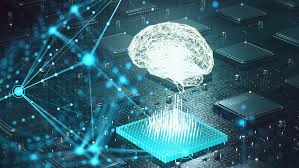
For example, in image processing, lower layers may identify edges, while higher layers may identify the concepts relevant to a human, such as digits, letters, or faces. It has a wide range of real-world applications like Maps, etc. Self-driving cars, Image and object recognition, Machine translation, Voice search, Ad targeting, and tracking also come under it.
Let’s have a closer look into some of these;
A) Images as a Deep Learning Opportunities
Deep learning has wide opportunities in Image and Picture processing. The following are some of the applications of it here:
- Color loss: Euclidean distance between the blurred versions of the predicted and target images.
- Texture loss: Based on the classification loss from a Generative Adversarial Network (GAN). The GAN is trained to predict whether a grayscale photo is of high or low quality.
- Content loss: Difference between VGG features of the predicted image and the ground truth. This loss ensures that the overall structure and objects in the image remain the same.
- Total Variation loss: Total vertical and horizontal gradients in the image. This enforces smoothness in the image, such that the final result is not too grainy or noisy.
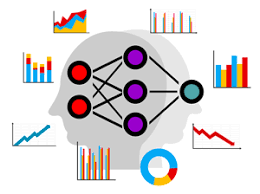
Deep learning techniques are also used in the classification of images. For increased accuracy, Image classification using CNN is most effective. First and foremost, we need a set of images. In this case, we take images of beauty and pharmacy products as our initial training data set. The image data input parameters are the number of images, image dimensions, channels, and levels per pixel.
B) Maps as a Deep Learning Opportunities
Deep learning techniques play a major role in Maps and spatial data processing and acquisition. It has been a core component of spatial analysis in GIS.

These tools and algorithms have been applied to geoprocessing tools to solve problems in three broad categories. With classification, you can use support vector machine algorithms to create land cover classification layers. The following are the functions done by deep learning in maps and geoprocessing;
Information: We presently have tremendous amounts of information because of the Internet. The sensors surrounding us and the various satellites consistently imaging the world.
Register: We have an incredible figure on account of distributed computing and GPUs. It has gotten more dominant than at any other time in recent memory. It has gone down in value on account of the gaming business.
Algorithmic upgrades: Finally, scientists have now split the absolute most testing parts of preparing the profound neural systems through algorithmic enhancements and system models.
C) Sports Performance as a Deep Learning Opportunities
Deep learning has started to have an impact on sports analytics. If we input a set of data, such as a GPS system, along with injury data, the software will try to create a model that allows it to predict which players got injured. Deep Learning Opportunities are expanding in this field.
We can then feed in additional information, such as the next season’s injury data. The computer will again try to predict injuries, but this time, It will also look for corrections in the calculations it makes in order to enhance its predictions. The impact of an action is the change in Q-value due to the action. The play data, along with the associated Q functions and impact, are fitted by a mimic regression tree. We learn a general mimic regression tree for all players and player-specific trees.
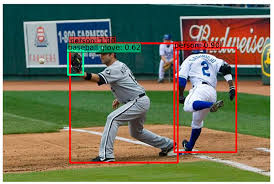
The transparent tree structure facilitates understanding the general action values by feature influence, partial dependence plots, and player’s exceptional characteristics by identifying player-specific relevant state regions.
D) Self Driving Cars
The Deep Learning Opportunities and algorithms are extensively used to find the solutions to various challenges arising in manufacturing self-driving cars, with the incorporation of sensor data processing in an ECU (Electronic Control Unit) in a car. It is essential to enhance the utilization of machine learning to accomplish new tasks. The potential applications include the evaluation of driver condition or driving scenario classification through data fusion from different external and internal sensors like LIDAR, RADAR, Cameras, or the IoT (Internet of Things).

In the autonomous car, one of the major tasks of a deep learning algorithm is a continuous rendering of the surrounding environment and forecasting the possible changes to these surroundings. These tasks are classified into sub-tasks:
- The detection of an Object
- The Identification of an Object or recognition object classification
- The Object Localization and Prediction of Movement
The machine learning algorithms are loosely divided into 4 classes: decision matrix algorithms, cluster algorithms, pattern recognition algorithms, and regression algorithms. One category of machine learning algorithms can be utilized to accomplish 2 or more subtasks.
E) Image recognition
Much of the modern innovations in image recognition are reliant on Deep Learning technology, an advanced type of Machine Learning, and the modern wonder of Artificial Intelligence. The kind of neural network used is convolutional neural networks for image recognition.
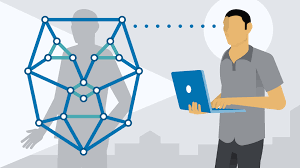
- Object recognition refers to a collection of related tasks for identifying objects in digital photographs.
- Region-Based Convolutional Neural Networks, or R-CNNs, are a family of techniques for addressing object localization and recognition tasks designed for model performance.
Image classification involves predicting the class of one object in an image. Object localization refers to identifying the location of one or more objects in an image and drawing abounding box around their extent. Object detection combines these two tasks and localizes and classifies one or more objects in an image.
F) Machine Translation as a Deep Learning Opportunities
Machine translation (MT) is an important natural language processing task that investigates the use of computers to translate human languages automatically. Deep learning-based methods have made significant progress in recent years and quickly become the new de facto paradigm of MT in both academia and industry.
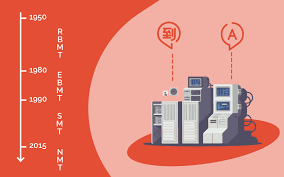
MT methods:
(1) Component-wise deep learning for machine translation that leverages deep learning to improve the capacity of the main components of SMT, such as translation models, reordering models, and language models;
(2) End-to-end deep learning for machine translation that uses neural networks to map between source and target languages directly based on the encoder–decoder framework.
Machine Translation (MT) is a subfield of computational linguistics that focuses on translating text from one language to another. With the power of deep learning, Neural Machine Translation (NMT) has arisen as the most powerful algorithm to perform this tasks.
G) Voice Search
Voice Search as we know it, though still perfecting, is awesome. It’s 2019 and use of voice search Is gaining grounds like fire ants. What future holds for voice search?? Voice search has been one of the most famous Deep Learning Opportunities ever used.
We know that all major players are investing heavily in voice search. Virtual assistants are basically the new customer service assistants.
Google Assistant, Siri by Apple, Alexa, Cortana, and Bixby. Who are they?

For technology, it is to set of many complex processes.
- Audio sampling
- Feature extraction
- Speech recognition
- Recognize individual sounds
- Converting them to text
Once it has a voice input converted into text, the uphill struggle of understanding it just starts from there onwards.
Two of the most difficult are:
- Processing text accurately
- Providing an accurate output
NLP faces numerous difficulties when preparing voice inputs: understanding and separating between highlights, isolating foundation commotion from a significant proclamation (isolating signal from clamor), covering discussions, and so forth.
H) Ad Targeting as a Deep Learning Opportunities
Good advertising has always been at the heart of successful companies.
With the advance of machine learning and deep learning technology embedded into advertising platforms, companies can now target their ads with astonishing accuracy and speak directly to their future clients.
With today’s complex customer journey, a digital business may experience tens of interactions with a single person – across display, search, search, social, and on the site or app. And to make everything even more difficult, all these interactions take place on multiple devices, making it a pain to measure and to optimize.

Machine learning has become critical for marketers and advertisers, who need to analyze endless signals in real-time and deliver ads to the right people at the right moments. Machine learning is also essential in measuring consumer journeys that now span multiple devices and channels across both the digital and physical worlds.
The new Google Attribution solutions that integrate with AdWords, Google Analytics, and DoubleClick Search make it easy to bring together data from all your marketing channels.
So, Above all are the Deep Learning Opportunities in current Information Technology and Tech Giant companies.
Must Read
What is cv2 imshow()? Explained with examples
Exciting FizzBuzz Challenge in Python With Solution
Python dateutil Module: Explanation and Examples
